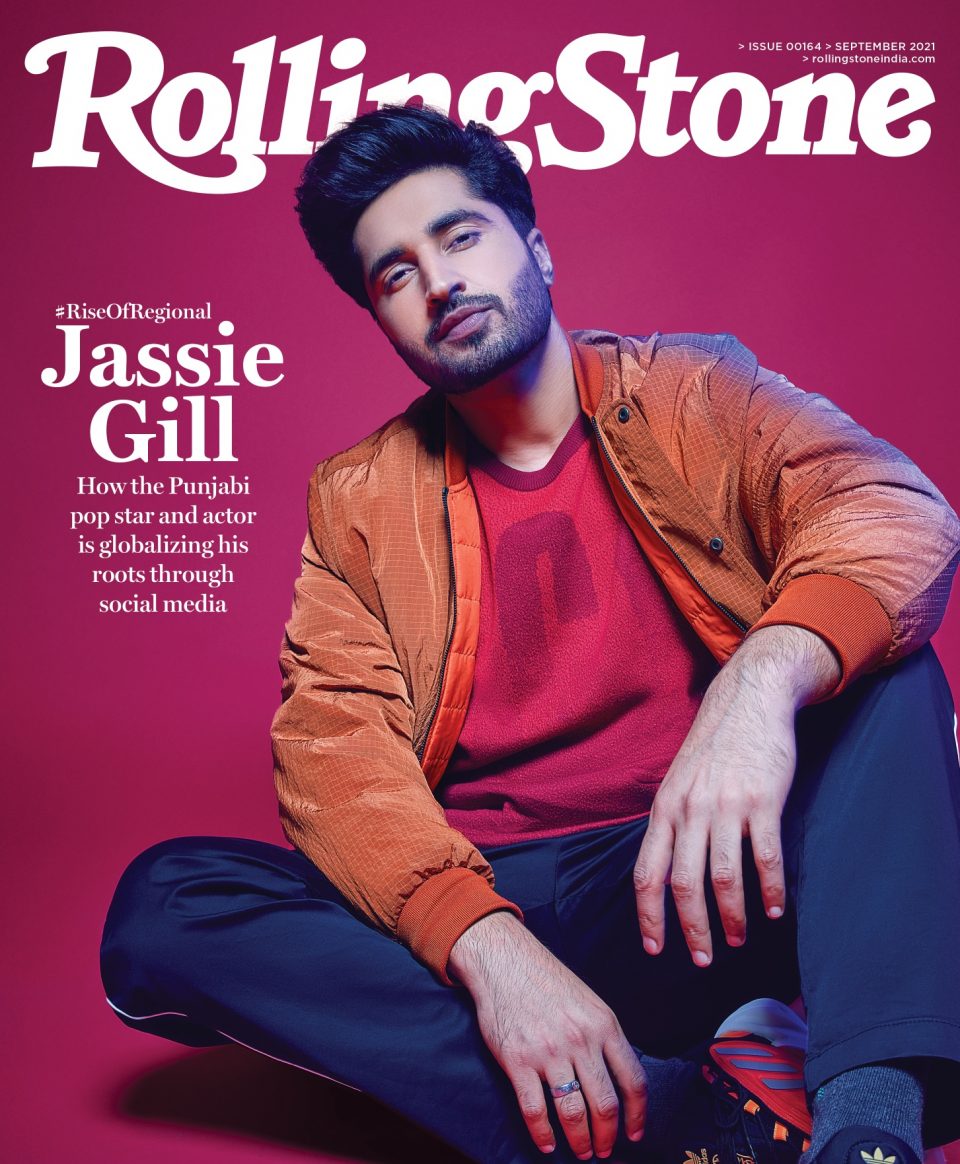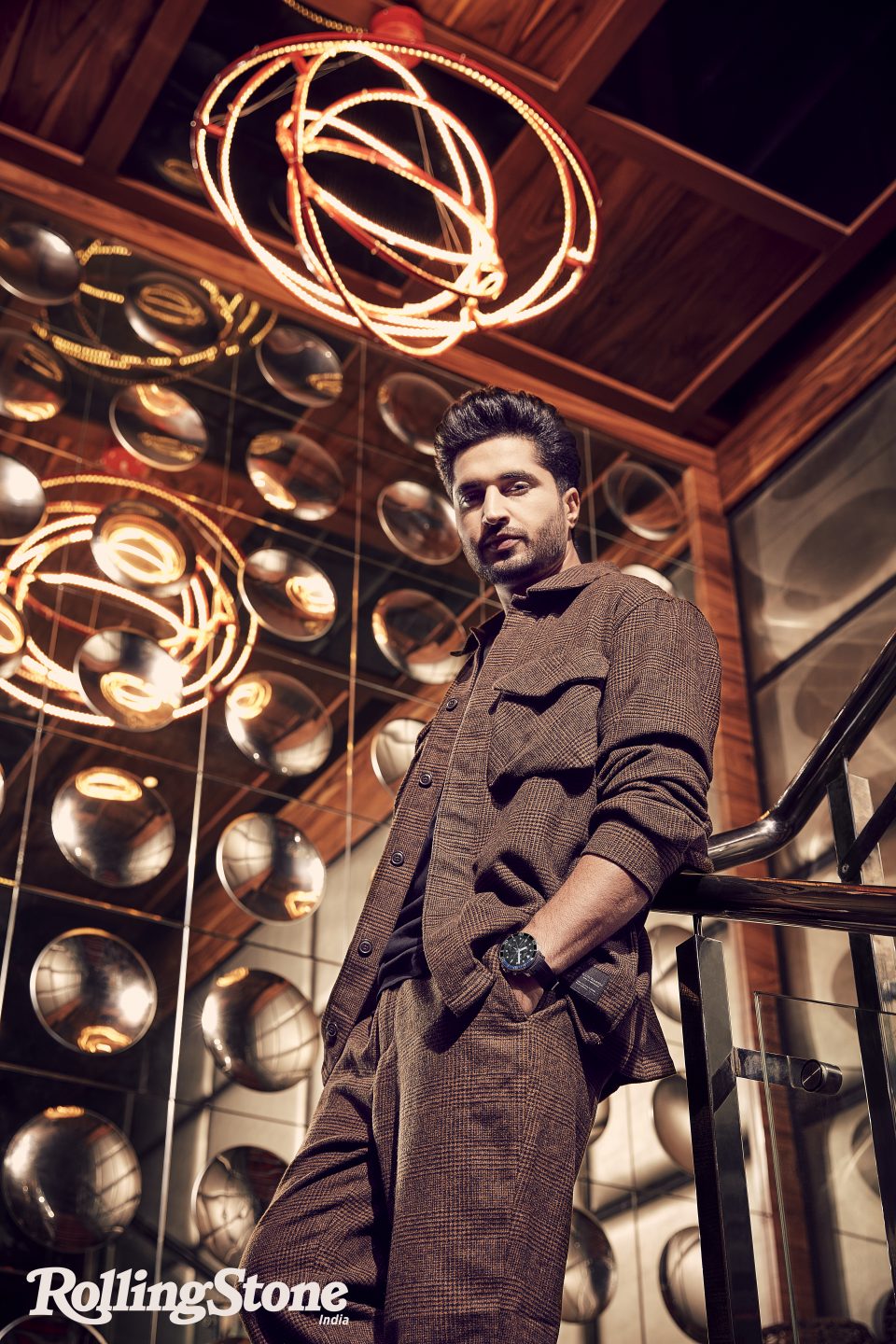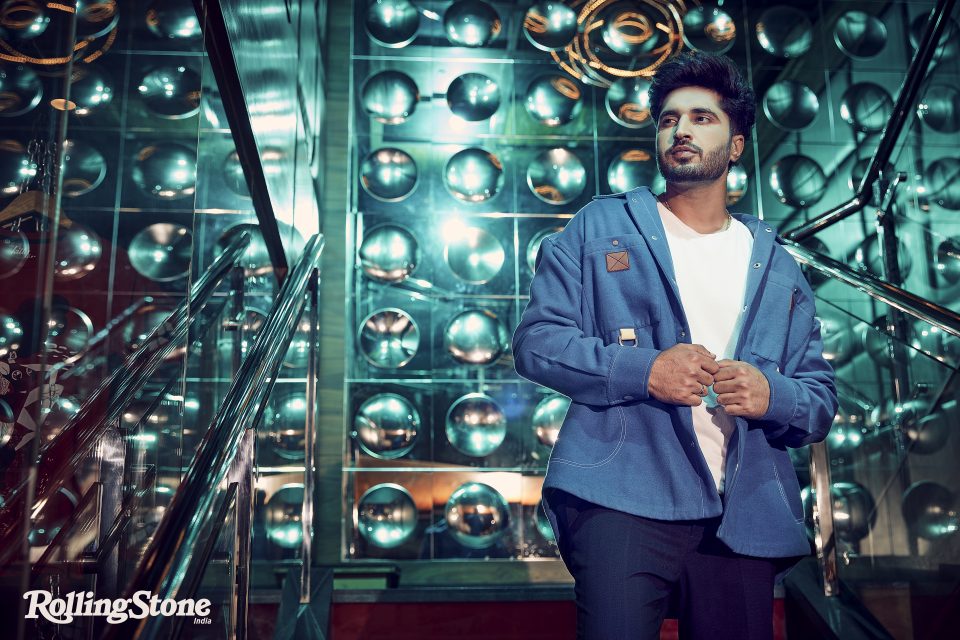COVER STORY: How Punjabi Pop Star Jassie Gill is Globalizing His Roots
The singer-actor on his rise from youth festivals to world stages, role of social media and his approach while working on film and independent music
The past 12 months have been nothing short of a post-apocalyptic tale all gone wrong. While we each made amends in our ways, silently praying for the gloomy skies of the pandemic to clear, music was the unifying force binding us all. Many went back to their comfort artists, while others took the opportunity to unearth regional gems within the Indian music industry.
One such artist that many found worthy of their streaming diet was Jassie Gill– the rising Prince of Punjabi pop.
Born Jasdeep Singh Gill to a Jat family in Ludhiana, Gill was destined for fame. Youngest amongst the three siblings, Gill was often pushed to meet the exceptional academic standards set by his sisters. Soon, Gill went on to study music formally in college along with physical education. Though the two were means of racking up his grades, Gill’s professors were instantly impressed when they first heard him sing. Entranced, they committed themselves to train him for local youth festivals where Gill placed second four times consecutively.
Raw talent plucked from the streets of Punjab, Gill sustained his pursuit of creative expression by picking up car washing gigs in Australia. Three years later and the fruits of his labor bore delectable results in the form of his debut album, Batchmate. Led by the single “Churiyan,” the track captured the soundscape of the early 2000s with an infectious melody of an acoustic guitar, dhol, sitar and soft synth sounds, giving it a Punjabi pop-ballad touch.
“When people think of Punjabi tracks, they instantly think of cars and glam. This is why I focus on creating music that connects with the audience”
-Jassie gill
Sitting in the studio, owning the denim, red t-shirt and leather jacket ensemble, Gill essentially gave his listeners a glimpse into the behind-the-scenes action through a collage of clips on the screen. A simple yet effective method of setting a relaxed environment, the video gave the world a taste of the new sound of romance and comfort packaged in a refreshed soundscape. “I want to show the diversity of Punjabi music,” reveals Gill. “When people think of Punjabi tracks, they instantly think of cars and glam. This is why I focus on creating music that connects with the audience–feel aane chahiye. Be it a party or concept-driven track like “Allah Ve” or “Lancer.” I always focus on creating good music that correctly reaches the audience.”

Shirt and Trousers by Scotch and Soda, T-shirt by Zara, On the Wrist : Tissot Seastar 1000 Quartz Chronograph. Photograph by Rohit Gupta for Rolling Stone India
A year later, Gill followed up with his sophomore album Batchmate 2 forayed by the hit single “Lancer.” Playing it safe, Gill channels his boy-next-door charms in this love ballad, playing the role of a middle-class college student unable to get the attention of his love interest. Sounding slightly less up-beat than his debut single, this melancholic and heart-stirring single is what many fans consider as his first big break. Considering Gill’s rich discography, millenials are acquainted with his acoustic sounds while Gen-Z would be more accustomed to his dance-pop hits such as “Oye Hoye Oye,” or as this one fan articulates under one of Gill’s videos; “Kids knows Jassi Gill from “Nikle Current,” Men know him from “Bapu Zimidar,” legends know him from “Vigre Sharabi,” and ultra pro max know him from his first album, Batchmate.”
Boasting eight studio albums and over 20 singles, Gill has employed the unique amalgamation of self-expression and localized style to appeal to a global audience. A quick Google search later and here are the statistics to attest the hypothesis; Gill brings in over 1.4 million monthly listeners on the Swedish-streaming platform Spotify with his 2018 single “Nikle Currant” featuring Bollywood singer Neha Kakkar crunching in over 15 million streams.

Jacket by Paul Smith, Jumper by United Colors of Benetton, Trousers by Armani Exchange, Sneakers by adidas originals. Photograph by Rohit Gupta for Rolling Stone India
In the past 12 months, Gill’s craft has infiltrated countries outside the Indian borders. With a total play of 605 million on his YouTube channel, Gill has appealed to listeners residing in India, Pakistan, Bangladesh, United States, Canada, United Kingdom, United Arab Emirates, Australia, and Saudi Arabia. Predominately a Punjabi-Hindi singer, Gill’s tracks have resonated with a non-Hindi speaking audience, made evident with listeners coming from Pune, Ahmedabad, Jaipur and Kolkata; “I never started with a vision to make my music popular outside of Punjab,” says Gill. He continues, “I mean sure, today we do have this thought running at the back of the minds–but with my earlier hits, we created those keeping Punjab in mind. Today, seeing Punjabi music being appreciated and celebrated all over India has been a humbling experience. I consider myself very lucky to be associated with the industry at a time where Punjabi music is growing rapidly.”
Tapping into the Bollywood summer trend, Gill has worked on a slice of mega-viral hits such as “Lamborgini,” “Nikle Currant” and his March 2021 hit “Oye Hoye Oye.” Observed amongst these tracks is a recurring pattern of deep-house sounds with the added spice of Punjabi pop– a concoction that sits well with his audience’s palate. But what makes the tracks trend on YouTue or Instagram’s latest arsenal, Reels, is Gill’s refreshed vocal approach and of course, a dedicated fan following of over 16 million across social media– a result of his endeavors as a singer and actor.
Appearing in 12 films, including the 2018 Hindi film Happy Phirr Bhaag Jayegi, Gill’s concept-driven music videos acted as a stepping stone for his acting endeavors. While the primary focus was ensuring the language gap was bridged by the stories his videos presented, those who worked around him saw this as an extension to his craft; “I knew I could sing well,” reveals Gill, “But acting was something I was told I’m good at. My videos are usually concept-driven which calls for some acting like in “Lancer,” where I played the role of a middle-class college student. This is where people started noticing I have a knack for acting and pushed me to work hard to polish it.”
In an exclusive interview with Rolling Stone India, Jassie Gill reveals his musical roots, purpose as a musician and the pride of hearing Punjabi music being played outside of India.
What is your creative process?
I can’t sit still, so my creative process is quite literally just ‘go, go, go.’ If I’m not tied down by personal commitments, I’ll make my way to the studio and work on anything. I don’t leave home with a set goal in mind, like “today I’ll work on a track”- no! That’s not an approach I take. I head out and let the inspiration just come to me. Also, working is a meditative experience for me- I feel content and at peace when I’m at the studio.
Does your working style differ when you’re working on a track for a film versus a track for your album?
There is an evident difference in how tracks are curated. When it’s a track for a film, we have to think about the situation of the film- what scene is this track accompanying, or what are the emotions here. But when you’re working on an independent project, your point of view opens as you’re no longer contained by any said script. I find the latter easier. Either way, be it film or independent, the focus is always producing good music that is received in high spirits by our listeners.
What are some of the goals you’ve set for yourself? Both as a musician and actor?
To be honest, I don’t have concrete goals set in place.- I take it step-by-step. I’m just really humbled by everything God has blessed me with. Never did I even dream of being where I currently stand. For me, It’s all about breaking my record- I am my competition. I just focus on delivering performances and music better than my previous release. It should be a reflection of my hard work and commitment to my craft. That’s all.
Who are some of the musical influences in your life? What are some of the attributes from these artists you’d like to imbibe?
I grew up listening to a lot of Punjabi artists like Kamal Khan, Firoz Khan paji and Amrinder Gill paji. I never played music from specific artists. For me, it was all about the melodies. So if I liked a particular track, especially those with an infectious melody, I’d listen to it irrespective of who sung it. While I was working on my forthcoming studio album- where I’ve worked as a vocalist and composer, I had an epiphany, reminding me of the artists I grew up listening to. I’m happy I grew up surrounding myself with many great musicians and didn’t contain myself to just one artist because I’m a fan of them.

Jacket by Kanika Goyal, T-shirt by Zara, Trousers by Scotch and Soda, Sneakers by Christian Louboutin. Photograph by Rohit Gupta for Rolling Stone India
A lot of your tracks have been popular on reels. What role has social media played in your career?
I love social media and its power. Back in my day, we’d work on an album, post it on Facebook and call it a day. But with social media, artists have been able to reach a larger audience. This has also helped popularize many tracks, singers and ensure our work gets out in the public quicker. But then again, with short-format content like reels, somewhere, the musical experience is being compromised. Getting the full feel and forming a judgment for a particular track in just 15 or 30- seconds doesn’t seem to do justice. Over time, my social media consumption patterns have changed. I used to spend a lot of time consuming content on social media but now, I’m a family man and prefer spending more time with them. I’ve also faced a fair share of negativity where people didn’t like my music which used to sting. But now that I’m mature, I understand not everyone will like my craft. This has helped regularize my usage too- I go on social media only to update my fans about my work and try not to be very accessible there.
What have been some of your greatest accomplishments and what have you learned from them?
I think that’d have to be my Bollywood debut. Taking things step-by-step and seeing this approach open new doors for me is a fulfilling experience. I never thought my singing would take me to Bollywood. This also re-instilled my faith in my process of taking things one day at a time.
What are some of the songs you hold close to your heart and why?
I love all my tracks as there’s a story and a significant amount of work gone into creating them. However, if I had to pick, I’d say “Lancer” is one of my favorite tracks- It helped me create a name for myself. Through this track, people started recognizing Jassie Gill. “Nikle Currant” and “Guitar Sikhda” follow closely. When “Nikle Currant” or “Bapu Zimidar” got hit, It helped me connect with people outside Punjab. Many unreleased songs can be added to this list too. Labels often want a track with the potential of generating 400 to 500 million views hence I’m waiting to release these in my album

Shirt and Trousers by Scotch and Soda, T-shirt by Zara, On the Wrist : Tissot Seastar 1000 Quartz Chronograph. Photograph by Rohit Gupta for Rolling Stone India
As you reflect on your life thus far, what are some of the decisions you’ve made that have heavily contributed to your success today?
First and foremost, It has to be my decision to sing. That was special. The fact that this was my true calling made it easier for me to give my one hundred percent. I don’t think I would have worked with this level of sincerity in any other profession. There have also been many a fair share of wrong decisions. Sometimes I look back and regret taking up a particular film. But then again, I circle back on my step-by-step system- I don’t think too far ahead. My sole purpose has always been to perform well. So be it Punjabi films or Bollywood films, I just put in my best. I am a believer in ‘you reap what you so’- so I’m working hards towards something, I’m positive the results will be fruitful.
How would you want your fans to remember you?
I was fortunate to have worked with Gurdas Maan ji when I’d just stepped into the industry. He’s worked for nearly 30 to 40 years and yet he’s humble and simple. If someone were to meet him, they won’t pick up any ill vibes or a superiority complex. He taught me that your work is something people are bound to remember for, but the people who’ve met you, especially your fans, should remember you as “Okay, I don’t know much about his music but he’s a good man.” This reflects in my working style and life mantra too- I just work and never hope for anything bad to happen to anyone– It also helps attract the right energy and people. So, in the future, when I’m not releasing any songs, I want people to remember me as someone who sings well and is a good human being. That’s all.
Photographer: Rohit Gupta for Rolling Stone India
Art director: Tanvi Shah
Fashion Editor: Neelangana Vasudeva
Fashion Assistant : Foram Kubadia
Hair by Ali Khan
Makeup by Krillex
Location Courtesy: The Lalit Chandigarh








